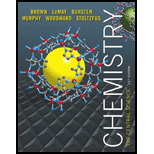
Chemistry: The Central Science (13th Edition)
13th Edition
ISBN: 9780321910417
Author: Theodore E. Brown, H. Eugene LeMay, Bruce E. Bursten, Catherine Murphy, Patrick Woodward, Matthew E. Stoltzfus
Publisher: PEARSON
expand_more
expand_more
format_list_bulleted
Concept explainers
Textbook Question
Chapter 12, Problem 56E
Clausthalite is a mineral composed of lead selenide (PbSe). The mineral adopts the rock salt structure. The density of PbSe at 25°C is
Expert Solution & Answer
Want to see the full answer?
Check out a sample textbook solution
Chapter 12 Solutions
Chemistry: The Central Science (13th Edition)
Ch. 12.3 - The following diagram shows the combination...Ch. 12.3 -
3.3 The following diagram represents the...Ch. 12.5 -
3.4 The following diagram represents the...Ch. 12.5 - Glycine, an amino acid used by organisms to make...Ch. 12.7 - The following diagram represents a...Ch. 12.7 -
3.7 Nitrogen (N2) and hydrogen (H2) react to form...Ch. 12.7 -
3.8 Nitrogen monoxide and oxygen react to form...Ch. 12.7 - Write "true" or "false" for each statement. a. We...Ch. 12 - Determine the empirical and molecular formulas of...Ch. 12 - a. Combustion analysis of toluene, a common...
Ch. 12 -
3.67 Automotive air bags infilate when sodium...Ch. 12 - Prob. 3ECh. 12 - Prob. 4ECh. 12 -
12.5 Which of these molecular fragments would...Ch. 12 - Prob. 6ECh. 12 - Prob. 7ECh. 12 - Prob. 8ECh. 12 - Prob. 9ECh. 12 - Prob. 10ECh. 12 - Prob. 11ECh. 12 - Prob. 12ECh. 12 - 12.13 Indicate the type of solid (molecular,...Ch. 12 - Prob. 14ECh. 12 -
12.15 A white substance melts with some...Ch. 12 -
12.16 You are given a white substance that...Ch. 12 - Prob. 17ECh. 12 - Prob. 18ECh. 12 - Prob. 19ECh. 12 - Prob. 20ECh. 12 - Prob. 21ECh. 12 - Prob. 22ECh. 12 - Prob. 23ECh. 12 - Prob. 24ECh. 12 - Prob. 25ECh. 12 - Prob. 26ECh. 12 - Prob. 27ECh. 12 - Prob. 28ECh. 12 - Prob. 29ECh. 12 - Prob. 30ECh. 12 - Prob. 31ECh. 12 - Prob. 32ECh. 12 - Prob. 33ECh. 12 - Prob. 34ECh. 12 - Prob. 35ECh. 12 - Prob. 36ECh. 12 - Prob. 37ECh. 12 - Prob. 38ECh. 12 - Prob. 39ECh. 12 - Prob. 40ECh. 12 - Prob. 41ECh. 12 - Prob. 42ECh. 12 - Prob. 43ECh. 12 - Prob. 44ECh. 12 - Prob. 45ECh. 12 - Prob. 46ECh. 12 - Prob. 47ECh. 12 - Prob. 48ECh. 12 -
12.49 Which would you expect to be the more...Ch. 12 - Prob. 50ECh. 12 - Prob. 51ECh. 12 - Prob. 52ECh. 12 - Prob. 53ECh. 12 - Prob. 54ECh. 12 - Prob. 55ECh. 12 - Clausthalite is a mineral composed of lead...Ch. 12 - Prob. 57ECh. 12 - Prob. 58ECh. 12 - Prob. 59ECh. 12 - Prob. 60ECh. 12 - Prob. 61ECh. 12 - Prob. 62ECh. 12 - Prob. 63ECh. 12 - Prob. 64ECh. 12 - Prob. 65ECh. 12 - Prob. 66ECh. 12 - Prob. 67ECh. 12 - Prob. 68ECh. 12 - Prob. 69ECh. 12 - Prob. 70ECh. 12 - Prob. 71ECh. 12 - Prob. 72ECh. 12 - Prob. 73ECh. 12 - Prob. 74ECh. 12 - Prob. 75ECh. 12 - Prob. 76ECh. 12 - Prob. 77ECh. 12 - Prob. 78ECh. 12 - Prob. 79ECh. 12 - Prob. 80ECh. 12 - Prob. 81ECh. 12 - Prob. 82ECh. 12 - Prob. 83ECh. 12 - Prob. 84ECh. 12 - Prob. 85ECh. 12 - Prob. 86ECh. 12 - Prob. 87ECh. 12 - Prob. 88ECh. 12 - Prob. 89ECh. 12 - Prob. 90ECh. 12 - Prob. 91ECh. 12 - Prob. 92ECh. 12 - Prob. 93ECh. 12 - Prob. 94ECh. 12 - Prob. 95ECh. 12 - Prob. 96ECh. 12 - Prob. 97ECh. 12 - Prob. 98ECh. 12 - Prob. 99AECh. 12 - Prob. 100AECh. 12 - Prob. 101AECh. 12 - Prob. 102AECh. 12 - Prob. 103AECh. 12 - What type of lattice—primitive cubic body-centered...Ch. 12 - Prob. 105AECh. 12 - Prob. 106AECh. 12 - Prob. 107AECh. 12 - Prob. 108AECh. 12 - Prob. 109AECh. 12 - Prob. 110AECh. 12 - Prob. 111AECh. 12 - Prob. 112AECh. 12 - Prob. 113AECh. 12 - 12.114 Germanium has the same structure as...Ch. 12 - Prob. 115AECh. 12 - Prob. 116AECh. 12 - The karat scale used to describe gold alloys is...Ch. 12 - Prob. 118IECh. 12 - Prob. 119IECh. 12 - Prob. 120IECh. 12 - Prob. 121IECh. 12 - Prob. 122IECh. 12 - Prob. 123IECh. 12 - Prob. 124IECh. 12 - Prob. 125IE
Knowledge Booster
Learn more about
Need a deep-dive on the concept behind this application? Look no further. Learn more about this topic, chemistry and related others by exploring similar questions and additional content below.Similar questions
- Lithium hydride (LiH) has the sodium chloride structure, and the length of the edge of the unit cell is 4.086 108 cm. Calculate the density of this solid.arrow_forwardThe coordination number of uniformly sized spheres in a cubic closest-packing (FCC) array is 12. Give the coordination number of each atom in (a) a simple cubic lattice. (b) a body-centered cubic lattice.arrow_forward• describe the arrangement of atoms in the common cubic crystal lattices and calculate the packing efficiency for a lattice.arrow_forward
- The density of polonium metal is 9.2 g/cm3. If the extended lattice of polonium exhibits a simple cubic unit cell, estimate the atomic radius of polonium.arrow_forwardIf an ionic solid has an fcc lattice of anions (X) and all of the tetrahedral holes are occupied by metal cations (M), is the formula of the compound MX, MX2, or M2X?arrow_forwardCrystalline polonium has a primitive cubic unit cell, lithium has a body-centered cubic unit cell, and calcium has a face-centered cubic unit cell. How many Po atoms belong to one unit cell? How many Li atoms belong to one unit cell? How many Ca atoms belong to one unit cell? Draw each unit cell. Indicate on your drawing what fraction of each atom lies within the unit cell.arrow_forward
- A cubic unit cell contains manganese ions at the corners and fluoride ions at the center of each edge. (a) What is the empirical formula of this compound? Explain your answer. (b) What is the coordination number of the Mn3+ ion? (c) Calculate the edge length of the unit cell if the radius of a Mn3+ ion is 0.65 A. (d) Calculate the density of the compound.arrow_forwardCaTiO3, a perovskite, has the structure below. (a) If the density of the solid is 4.10 g/cm3, what is the length of a side of the unit cell? (b) Calculate the radius of the Ti4+ ion in the center of the unit cell. How well does your calculation agree with a literature value of 75 pm? Unit cell of the perovskite CaTiO3 A sample of perovskite, iO3 FIGURE 7.11 Relative sizes of some common ions. Rodii are given in picometers (1 pm 1 1012 m). (Data taken from J. Emsley, The Elements, Clarendon Press, Oxford, 1998, 3rd edition.)arrow_forward
arrow_back_ios
arrow_forward_ios
Recommended textbooks for you
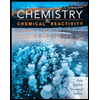 Chemistry & Chemical ReactivityChemistryISBN:9781337399074Author:John C. Kotz, Paul M. Treichel, John Townsend, David TreichelPublisher:Cengage Learning
Chemistry & Chemical ReactivityChemistryISBN:9781337399074Author:John C. Kotz, Paul M. Treichel, John Townsend, David TreichelPublisher:Cengage Learning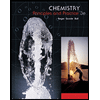 Chemistry: Principles and PracticeChemistryISBN:9780534420123Author:Daniel L. Reger, Scott R. Goode, David W. Ball, Edward MercerPublisher:Cengage Learning
Chemistry: Principles and PracticeChemistryISBN:9780534420123Author:Daniel L. Reger, Scott R. Goode, David W. Ball, Edward MercerPublisher:Cengage Learning Chemistry by OpenStax (2015-05-04)ChemistryISBN:9781938168390Author:Klaus Theopold, Richard H Langley, Paul Flowers, William R. Robinson, Mark BlaserPublisher:OpenStax
Chemistry by OpenStax (2015-05-04)ChemistryISBN:9781938168390Author:Klaus Theopold, Richard H Langley, Paul Flowers, William R. Robinson, Mark BlaserPublisher:OpenStax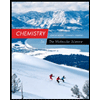 Chemistry: The Molecular ScienceChemistryISBN:9781285199047Author:John W. Moore, Conrad L. StanitskiPublisher:Cengage Learning
Chemistry: The Molecular ScienceChemistryISBN:9781285199047Author:John W. Moore, Conrad L. StanitskiPublisher:Cengage Learning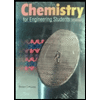 Chemistry for Engineering StudentsChemistryISBN:9781337398909Author:Lawrence S. Brown, Tom HolmePublisher:Cengage Learning
Chemistry for Engineering StudentsChemistryISBN:9781337398909Author:Lawrence S. Brown, Tom HolmePublisher:Cengage Learning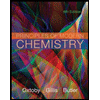 Principles of Modern ChemistryChemistryISBN:9781305079113Author:David W. Oxtoby, H. Pat Gillis, Laurie J. ButlerPublisher:Cengage Learning
Principles of Modern ChemistryChemistryISBN:9781305079113Author:David W. Oxtoby, H. Pat Gillis, Laurie J. ButlerPublisher:Cengage Learning

Chemistry & Chemical Reactivity
Chemistry
ISBN:9781337399074
Author:John C. Kotz, Paul M. Treichel, John Townsend, David Treichel
Publisher:Cengage Learning

Chemistry: Principles and Practice
Chemistry
ISBN:9780534420123
Author:Daniel L. Reger, Scott R. Goode, David W. Ball, Edward Mercer
Publisher:Cengage Learning

Chemistry by OpenStax (2015-05-04)
Chemistry
ISBN:9781938168390
Author:Klaus Theopold, Richard H Langley, Paul Flowers, William R. Robinson, Mark Blaser
Publisher:OpenStax

Chemistry: The Molecular Science
Chemistry
ISBN:9781285199047
Author:John W. Moore, Conrad L. Stanitski
Publisher:Cengage Learning

Chemistry for Engineering Students
Chemistry
ISBN:9781337398909
Author:Lawrence S. Brown, Tom Holme
Publisher:Cengage Learning

Principles of Modern Chemistry
Chemistry
ISBN:9781305079113
Author:David W. Oxtoby, H. Pat Gillis, Laurie J. Butler
Publisher:Cengage Learning
Unit Cell Chemistry Simple Cubic, Body Centered Cubic, Face Centered Cubic Crystal Lattice Structu; Author: The Organic Chemistry Tutor;https://www.youtube.com/watch?v=HCWwRh5CXYU;License: Standard YouTube License, CC-BY